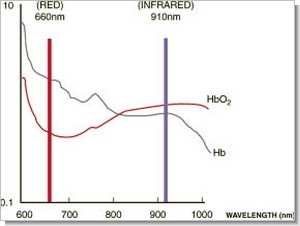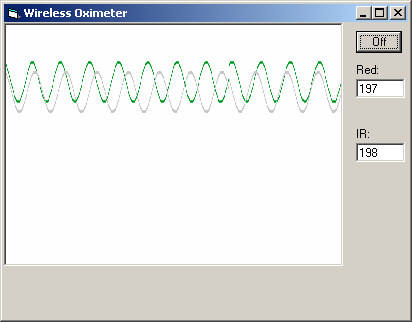
Circuit wirelessly measure the amount of oxygen in the blood of integrated control pic16f876 usb parallel computer link module provided with all the details pc software flow diagrams and shared resource
The medical field has been quick to embrace wireless technology. The advantages in being able to monitor a number of patients from a distance are obvious, and lead to improved efficiency in a busy hospital.
Pulse oximetry is a non-invasive method of measuring a person’s blood oxygen saturation and pulse rate. Its medical applications include the monitoring of patients during anaesthesia, intensive care, or those with conditions such as asthma. The sensor itself is usually in the form of a small clip, worn on the finger, ear, or toe.
The aim of this project was to develop a way for multiple oximeters to be able to be simultaneously monitored from a short distance by a single person, each oximeter fitting all components, including those needed for wireless communication, inside the clip. The overall system structure is centralised, with a receiver device taking signals from all oximeters in the area. Each oximeter’s readings are displayed on a laptop, which the receiver is attached to.
Much of the designated application has been limited to a hospital or similar environment, but the system would prove useful for anyone operating in a situation where hypoxia is a risk.
Wireless oximeter Circuit

Wireless Oximeter The medical field has been quick to embrace wireless technology. The advantages in being able to monitor a number of patients from a distance are obvious, and lead to improved efficiency in a busy hospital.
Oximeter implementation The oximeter was separated into two PCBs, each intended for a ‘layer’ of the finger clip. The LEDs were positioned on the top PCB, while the rest of the components were on the bottom PCB, double-sided to save room. The design of both these PCBs can be found in
The QTLP650C-7, a surface mount AlGaAs red LED, which emits at a wavelength of 660nm, was used in conjunction with the HSDL-4400-011, a surface mount IR LED, which emits at a wavelength of 910nm. They have a typical intensity of 20 and 15mcd at 20mA, respectively. A BPW17N phototransistor and TL072 op amp IC were used as well. To power the oximeter, two CR2032DP2 3V lithium coin cells, each with a capacity of 180mAh, were used.
The transceiver chosen was the RFW102-M module with antenna, from RFWaves, a short-range, half duplex wireless radio transceiver, which functions in the ISM (2400- 2483.5MHz) band. It supports data transfer up to 1Mbps, and very low power consumption, proportional to the data rate (typically 21mA at 1Mbps, 28mA at 1kbps).
Oximeter firmware The microcontroller chosen for both the oximeter and the receiver was the PIC16F876, because of its relatively small size and ease of use. It features a 10-bit, 8 channel ADC, low supply voltage, low power consumption, and comes in a 28-pin DIP package.
source: http://innovexpo.itee.uq.edu.au/2003/exhibits/s363328/ Wireless Oximeter USB PC interface PIC16F876 Measurement alternative link:
Şifre-Pass: 320volt.com
Publication date: 2009/12/24 Tags: microchip projects, microcontroller projects, pic16f876 projects
Proton ide Graphic LCD Example
This article and other pages made with GLCD PIC MCU applications and projects will be discussed. The programming language used Proton Basic and schematic program Proteus 7.4 SP3 will be used. 16F877 MCU will be used.
In this application we use chip KS0108 GLCD Winstar GLCD WG128 * 64B White light is backlit. WG128 large graphic 128 * 64 GLCD milk is 64 lines. Proton GLCD font used to print the PRINT command is AT command. First, let GLCD applications necessary for our scheme